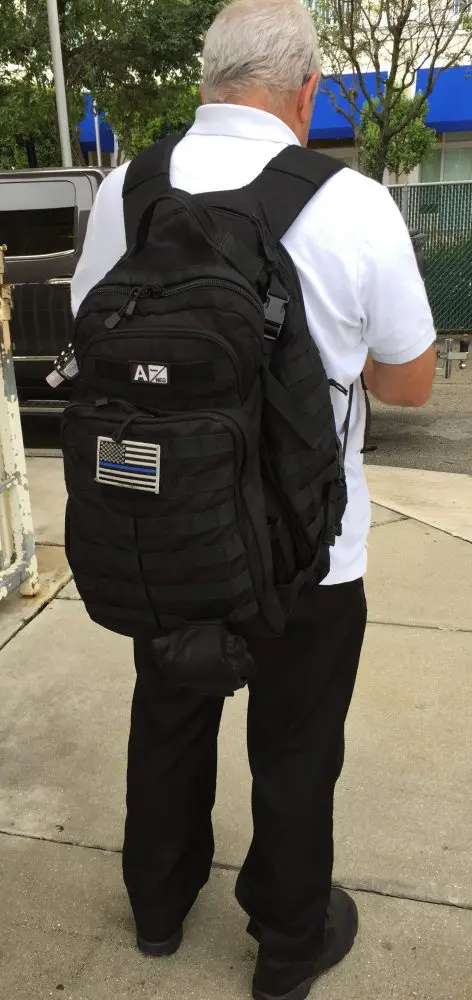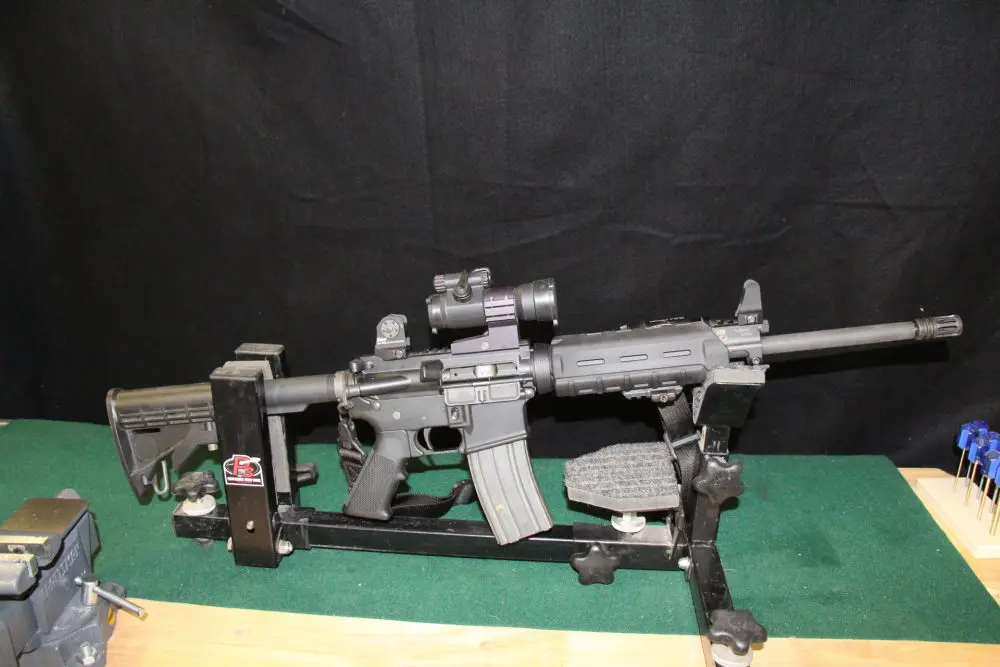There is a hoary old joke that is relevant when discussing the best options for responding to a crisis: “How do you eat an elephant?”
The answer: “Take very small bites.”
That wheezing old one-liner captures the essence of dealing with any problem, regardless if the incident in question is a major regional disaster or merely a couple of troubled urban youths loitering near your car. In either case, there is a mind-numbing array of possible actions and reactions from which to choose in a very short time frame.
It is natural to try and analyze all the problems and eventualities simultaneously. However, you quickly reach the point of mental overload wherein you don’t know whether to soil your undergarments or become sightless.
The best method for dealing with such complex decisions quickly is to break the entire predicament into smaller, more digestible chunks. Once the big picture has been turned into a series of discrete and more understandable brush strokes, each one can then be analyzed and tackled in order of priority.
Though it sounds complicated on paper, this technique is simple, quick and effective, provided you have mentally prepared before the moment of crisis.
In any critical situation, you must prime yourself to ask automatically, “What is the single most important thing right now?” Simultaneously you must learn to filter out extraneous noise, both mental and physical, so it is easier to understand what is truly important to your well-being.
When you answer this question, the highest item on the priority list becomes that first task you must complete before moving on to other things. After item number one has been successfully handled, you can then move along to item number two and so on. In this manner, even a complex problem such as clearing a large, convoluted building becomes easier to resolve as you break the task into smaller and smaller steps.
While this idea might seem to have more application to planning a complex rescue operation than approaching a couple of disadvantaged youths with goofy hats and complicated haircuts, the concept of breaking down intricate problems into manageable steps is actually something most of us do in everyday life. Unfortunately, when weighed down by the emotional baggage of a life-threatening crisis, we tend to forget this common skill and go straight into complete mental gridlock while struggling to resolve 10,000 questions simultaneously.
Let’s examine this phenomenon using a scenario faced somewhere every day in our country.
John Q. Citizen has arrived at his suburban castle after a hard day toiling in the trenches of corporate America. As the garage door begins to rise, John is dismayed to see that the door into the house has been kicked open.
John is now facing what we academically refer to as “a situation.” As he leaps from his car and pulls out his trusty Superblaster 5000 pistol, Mr. Citizen has a few things to consider:
“Where are the kids? Did I actually get robbed? I wonder if the neighbors saw anything? Where’s the dog? Are they still inside? I wonder if I can shoot them if they walk out the door. Where is my wife? Should I call the police? Should I consider my lawn tractor to be cover or concealment? Maybe I should wait out here? If they took my new widescreen television, I’ll strangle them with my bare hands…”
Almost everyone has faced a moment like this where everything from the most trivial thoughts (“Where’s the dog?”) to the most critical concerns (“Are they still inside?”) receive equal attention. Obviously, if the bad guys walk outside during all these mental gymnastics, our hero is less than prepared for a dangerous confrontation.
Consider what happens when John decides that he must enter the house to check on his children without waiting for the police. Aside from tremendous emotional pressure imparted by anxiety over the well-being of family members, there will be thousands of tactical decisions to make ranging from the best way to clear the living room to what should be done if a suspect is captured without lethal force.
Regardless of the stress and complexity of this situation, the whole mental ball of snakes can still be unraveled if John can just remember one basic question: what is the biggest problem (or greatest threat) at this moment in time and space?
I have seen operators (never your peerless writer) sometimes freeze when suddenly confronting a difficult tactical problem. The underlying cause is not a lack of training, intellect or courage, but rather the inability to deconstruct a complex task into manageable segments while simultaneously worrying about every bad thing that might conceivably happen.
Instead of fretting about everything all at once, the challenge needs to be broken down using a yardstick of time or space. For example, if confronting a tricky interior location, your mental dialog might sound something like this: “As I move the first two feet, my greatest danger is from this doorway. That other doorway is a lesser threat, but I can’t cover both at once. Then, after I cross the threshold, my primary threat is from the intersecting hallway. Once past that point, I need to watch the next doorway…”
Analyzing the situation in this manner turns the whole sequence into something akin to a diagrammed football play rather than ad-hoc movement that relies primarily on the benevolence of your chosen deity in order to succeed. It takes a second to segment tasks in this manner, but ultimately it saves much time and heartache down the road.
No matter how complicated the physical layout, the number of competing concerns or how overwhelming the outside influences, the competent warrior reflexively splits every complex problem into its simpler component building blocks, which are then prioritized and addressed in turn.
The trick becomes remembering this oh-so-simple task when faced with everything from people shouting in your ear to that little concern of being killed at any moment.
By comparison, tackling a tenderloin the size of a torpedo would seem like child’s play.






